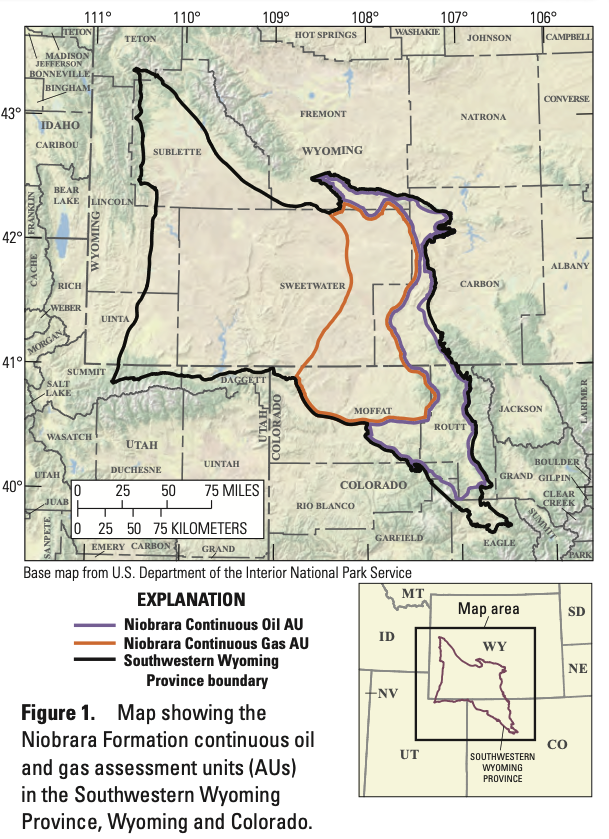USGS releases assessment of undiscovered oil and gas resources in the Niobrara Formation of SW Wyoming and NW Colorado
703 million barrels of oil, 5.8 trillion cubic feet of gas estimated in Niobrara Formation
RESTON, VA. — The U.S. Geological Survey released its assessment of potential for undiscovered oil and gas in the Niobrara Formation in southwest Wyoming and northwest Colorado, assessing that there are technically recoverable resources of 703 million barrels of oil and 5.8 trillion cubic feet of gas.
The USGS assessment estimates there is enough undiscovered oil in the Niobrara Formation to meet U.S. needs for one month, and as much undiscovered natural gas as the U.S. consumes in two months, at the current rates of consumption.
This is the second recent oil and gas assessment in the Southwestern Wyoming Geologic Province, following the assessment of the Mowry Composite Total Petroleum System, which lies below the Niobrara Formation. The geologic province also produces abundant oil and gas from other formations, such as the Lance Formation, Lewis Shale, and the Mesaverde Group, none of which are accounted for in these assessments.
“USGS energy assessments typically focus on undiscovered resources – areas where science tells us there may be a resource that industry hasn’t discovered yet. In this case, our assessment found substantial oil and gas resources,” said Sarah Ryker, acting director of the USGS.
USGS oil and gas assessments began 50 years ago following an oil embargo against the U.S. that signaled a need to understand the occurrence, distribution and potential volumes of undiscovered resources. The embargo led to a mandate for the USGS to use geologic science and data to assess undiscovered oil and gas resources to help meet the nation’s needs. The work continues today – identifying new resources for domestic production as well as international resources that affect market conditions -- an important part of the USGS mission to provide actionable insight to U.S. leaders, other Federal agencies, industry and the public.
USGS energy resource assessments provide information to policymakers on resource potential in areas of the U.S. and the world. For land-management agencies such as the Bureau of Land Management, the results of an energy resources assessment feed into land-use and resource management plans. For the private sector, USGS assessments of undiscovered energy resources provide context for planning detailed exploration.
The range of assessments produced has changed with the technology available to produce oil. In 1995, the USGS began conducting assessments of unconventional, technically recoverable resources. “The shift to horizontal drilling with fracking has revolutionized oil production, and we’ve changed with it,” said Christopher Schenk, USGS geologist.
The USGS Energy Resources Program assesses the potential for undiscovered oil and gas resources in priority geologic provinces in the United States and around the world. Two methodologies are used by the USGS: one for assessing conventional oil and gas resources and one for assessing unconventional (continuous) oil and gas resources (such as shale gas and coalbed gas).
--This post was revised to correct a geographical error in the headline.


